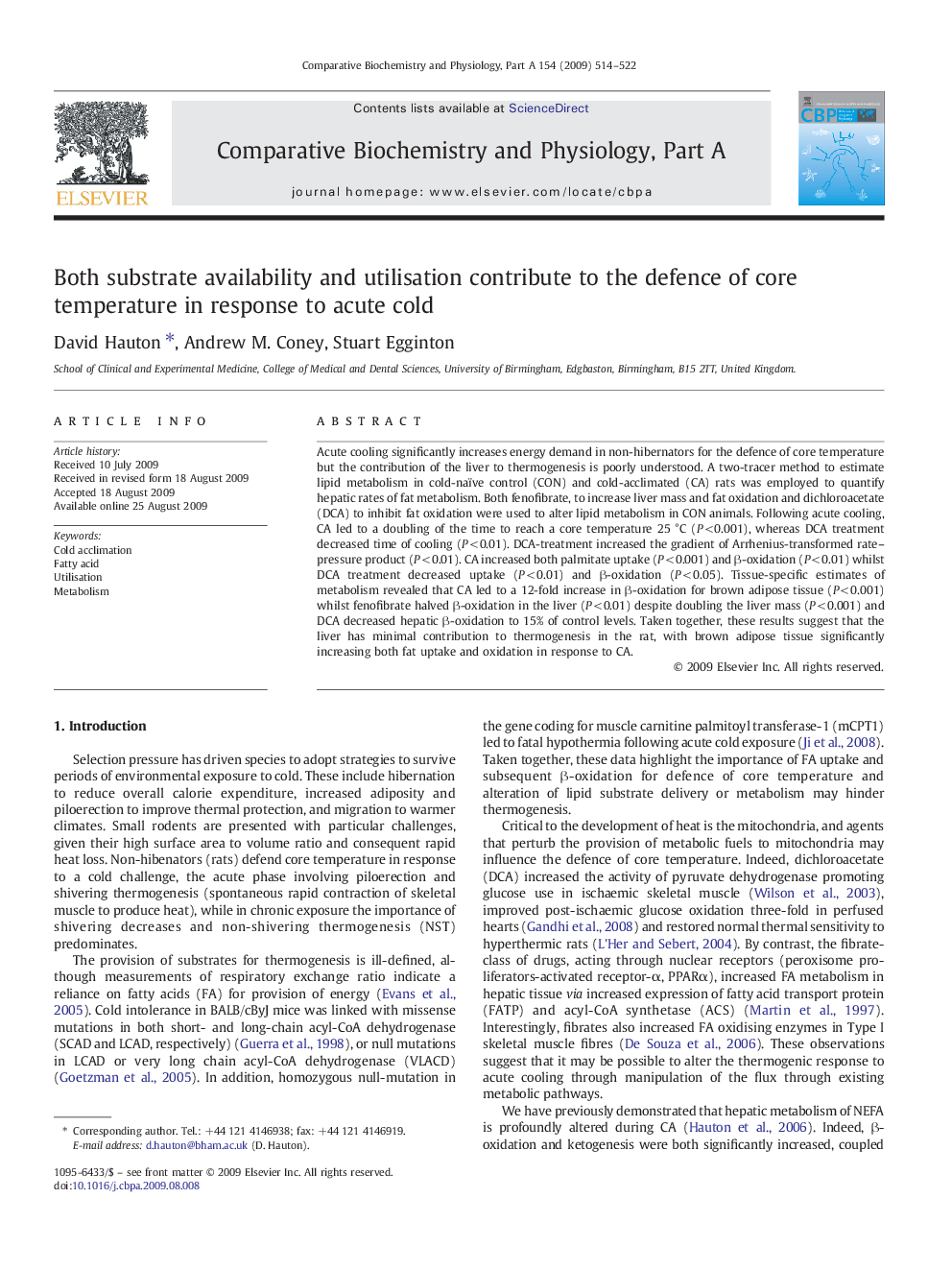| کد مقاله | کد نشریه | سال انتشار | مقاله انگلیسی | نسخه تمام متن |
|---|---|---|---|---|
| 1973183 | 1060309 | 2009 | 9 صفحه PDF | دانلود رایگان |

Acute cooling significantly increases energy demand in non-hibernators for the defence of core temperature but the contribution of the liver to thermogenesis is poorly understood. A two-tracer method to estimate lipid metabolism in cold-naïve control (CON) and cold-acclimated (CA) rats was employed to quantify hepatic rates of fat metabolism. Both fenofibrate, to increase liver mass and fat oxidation and dichloroacetate (DCA) to inhibit fat oxidation were used to alter lipid metabolism in CON animals. Following acute cooling, CA led to a doubling of the time to reach a core temperature 25 °C (P < 0.001), whereas DCA treatment decreased time of cooling (P < 0.01). DCA-treatment increased the gradient of Arrhenius-transformed rate–pressure product (P < 0.01). CA increased both palmitate uptake (P < 0.001) and β-oxidation (P < 0.01) whilst DCA treatment decreased uptake (P < 0.01) and β-oxidation (P < 0.05). Tissue-specific estimates of metabolism revealed that CA led to a 12-fold increase in β-oxidation for brown adipose tissue (P < 0.001) whilst fenofibrate halved β-oxidation in the liver (P < 0.01) despite doubling the liver mass (P < 0.001) and DCA decreased hepatic β-oxidation to 15% of control levels. Taken together, these results suggest that the liver has minimal contribution to thermogenesis in the rat, with brown adipose tissue significantly increasing both fat uptake and oxidation in response to CA.
Journal: Comparative Biochemistry and Physiology Part A: Molecular & Integrative Physiology - Volume 154, Issue 4, December 2009, Pages 514–522